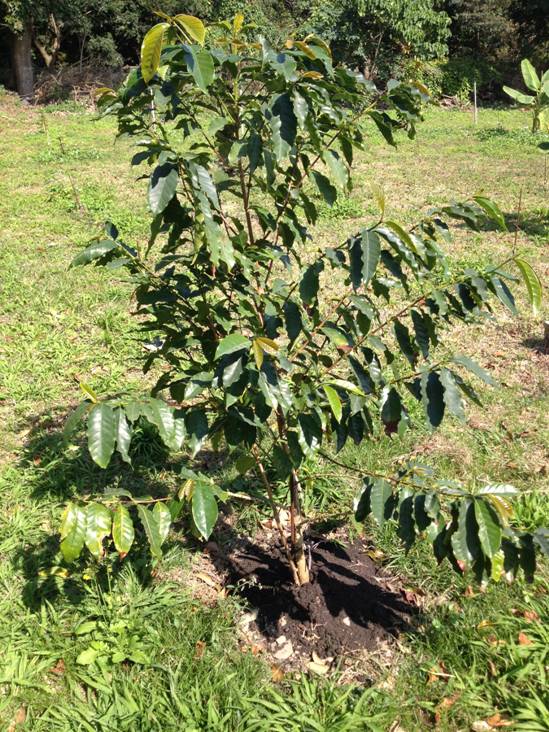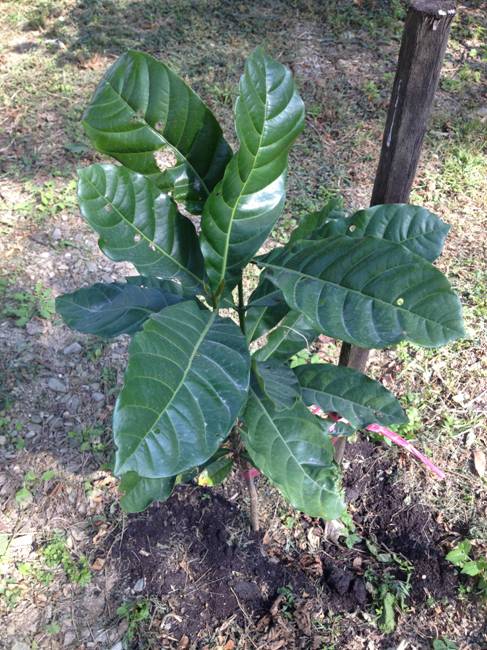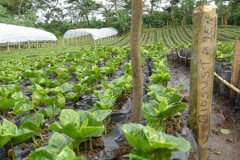Coffee cultivation techniques how to cultivate coffee seeds? Suitable climate and soil for coffee cultivation

Professional coffee knowledge exchange more coffee bean information please follow the coffee workshop (Wechat official account cafe_style)
What are the fruits and seeds of coffee? What the coffee beans look like.
Coffee is a perennial evergreen shrub of Rubiaceae. At present, the coffee with economic value is mainly Coffea arabica (Arabica) and Coffea canephora (Robusta), and there is also Coffea liberica (Liberian coffee). Arabica accounts for about 70% of the world's main cultivation, while Robusta accounts for about 30% of the market.
At present, we have collected coffee varieties from Pingzhen in Taoyuan, Nantou, Hui Sun Forest Farm, Yunlin Gukeng, Meishan in Chiayi, Dongshan in Tainan, Fanping in Kaohsiung and Pingtung in Pingtung.

Arabica grows coffee

Coffee grown in Liberia
Different varieties of coffee fruits
I. Coffee climate and local conditions
The cultivation of coffee is mainly limited by temperature, and the suitable temperature is 15 ℃ 24 ℃. If it exceeds 30 min, it is easy to burn the leaves. Therefore, in tropical areas, most species are selected in high altitude fields, and coffee is very weak in resistance to frost damage, so planting should be avoided in places prone to frost damage. The average rainfall of 1500Mel 2500 mm is better, and the dry and low temperature environment is preferred in winter, which is beneficial to flower bud differentiation and harvest drying.
The traditional coffee growing area is about between the Tropic of Cancer and the Tropic of Cancer, called the coffee belt (Coffee zone), which is an ideal coffee growing area.
Coffee has a low requirement for sunshine, especially Arabica, which has a low tolerance to strong sun, so Arabica can use shade trees to reduce direct sunlight.
The root of coffee has a high demand for oxygen, so the soil must have good drainage. Arabica is the most suitable for pozzolanic geological soil. Robusta is suitable for growing in soil rich in humus, and the suitable pH value is between 5.2 and 6.2.
Second, the propagation and cultivation of coffee
Coffee can be propagated by seeds, grafting or cuttings, but it is still propagated mainly by seeds. The fresh seeds germinated about 8 weeks after sowing, and the seedlings could grow to 20MUR / 30cm after sowing, and the suitable month was from December to March. The best row spacing is 3.5 × 3.5 meters.
The seedlings of coffee
The seedlings of coffee
Third, the pruning of coffee
Coffee began to bear fruit after 3-4 years of planting, and after several years of harvest, the fruit gradually grew to the end of the fruiting branch, resulting in a decline in yield and quality. There are two ways, one is for the whole coffee garden, the plants are renewed in turn with different multiples, and the other is to keep each coffee plant with 3 main branches, and each main branch is renewed in turn to maintain good tree potential and fruit quality.
IV. Fertilization of coffee
In general, 2:1:1 (N:P:K) fertilizer can be used for coffee in the first year, and 3:2:2 (N:P:K) fertilizer can be used in the second year, and then the proportion of phosphorus and potassium fertilizer increases year by year. Fertilizer should also make some adjustments to the climate and environment, such as high temperature and high light can increase the proportion of potash fertilizer, such as low temperature and low light environment can increase the proportion of nitrogen fertilizer, reduce the application of potash fertilizer. In addition, the detection of soil fertility and physical properties can be used to carry out correct fertilizer management and improve yield and quality.
.
Important Notice :
前街咖啡 FrontStreet Coffee has moved to new addredd:
FrontStreet Coffee Address: 315,Donghua East Road,GuangZhou
Tel:020 38364473
- Prev

The growth of professional baristas: the certification of internationally qualified coffee will pave the way for entry into the industry
Professional coffee knowledge exchange more coffee bean information Please follow the coffee workshop (Wechat official account cafe_style) Coffee Certificate what are there? SCA Coffee Diploma six modules, CQI International Certification with the popularity of coffee culture, drinking coffee is not only for refreshing, but also the pursuit of taste. At present, in addition to chain coffee shops, boutique coffee shops have also opened into a successful market, in order to ensure the quality
- Next

Common sense of Coffee Tree planting Coffee how to grow Coffee and where is it suitable to grow Coffee in China
Professional coffee knowledge exchange more information about coffee beans Please follow the coffee workshop (Wechat official account cafe_style) what are the fruits and seeds of coffee? Coffee trees grow in the tropics between Tropic of Cancer and Tropic of Cancer and near the equator, also known as the world coffee growth belt, caffeine varieties and regional factors.
Related
- Beginners will see the "Coffee pull flower" guide!
- What is the difference between ice blog purified milk and ordinary milk coffee?
- Why is the Philippines the largest producer of crops in Liberia?
- For coffee extraction, should the fine powder be retained?
- How does extracted espresso fill pressed powder? How much strength does it take to press the powder?
- How to make jasmine cold extract coffee? Is the jasmine + latte good?
- Will this little toy really make the coffee taste better? How does Lily Drip affect coffee extraction?
- Will the action of slapping the filter cup also affect coffee extraction?
- What's the difference between powder-to-water ratio and powder-to-liquid ratio?
- What is the Ethiopian local species? What does it have to do with Heirloom native species?

